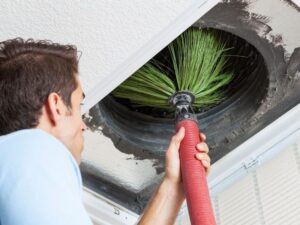A circuit breaker’s role is to discontinue the electric current to prevent fire from breaking out. If your circuit breaker keeps tripping, your heat pump is one of the most likely culprits. Find out below why your heat pump trips the circuit breaker in Aiken, SC.
A Dirty Condenser Coil
A heat pump uses the condenser coil to absorb heat from the environment or release heat to the environment, depending on the season. The condenser coil is usually in the outdoor unit. Being outside exposes the condenser unit to contaminants such as leaves, dirt, and debris. Your pets may also rub against the unit and release fur.
A dirty condenser coil does not allow the heat pump to absorb or release heat efficiently. Consequently, your HVAC system overworks and draws more electric current than usual, causing the circuit breaker to trip.
Low Refrigerant Levels
Refrigerant helps to relay heat to or from your house. The refrigerant lines could receive damage from external sources, such as when you hit the outdoor unit with your lawnmower, causing the refrigerant to leak.
This leak reduces the quantity of refrigerant available to relay heat. As a result, your system works harder, prompting the circuit breaker to trip.
A Faulty Compressor
As your heat pump ages, its parts may start to develop problems. One of the parts that may begin to malfunction is the compressor.
The component draws excessive electric current when starting, causing the circuit breaker to trip. Regular heat pump maintenance can help keep your system’s parts in good condition.
Outdoor Fan Issues
The outdoor fan helps to blow air over the condenser coil. If the fan motor is faulty or dirty, it may not rotate the fan. The motor may draw more electric current, attempting to perform its functions. Heat pump maintenance can help take care of a dirty or faulty motor, restoring it to optimal efficiency.
Contact Doc Savage Heating & Air Conditioning, Inc. for quality HVAC services in the southeast region. Our technicians have the necessary skills, certifications, tools and equipment to take care of any HVAC issues.
Image provided by iStock



